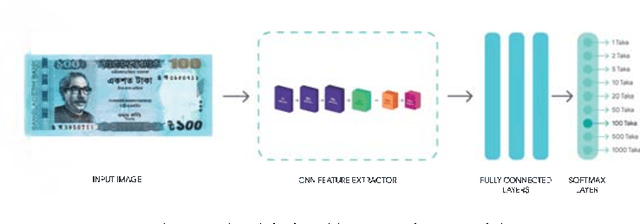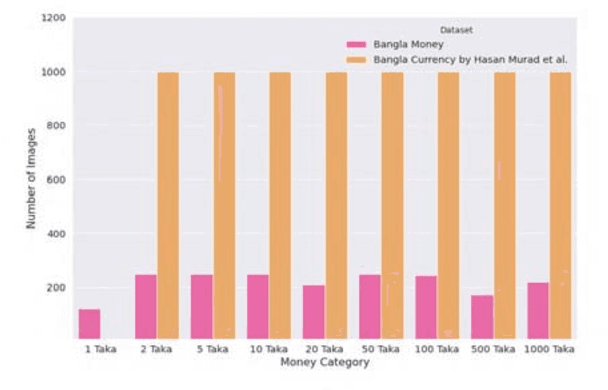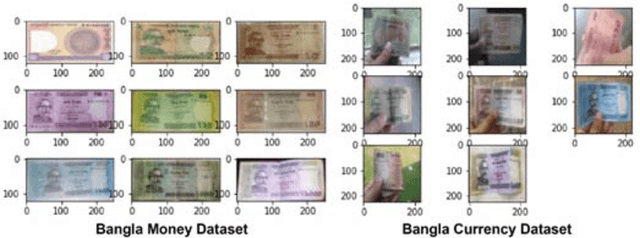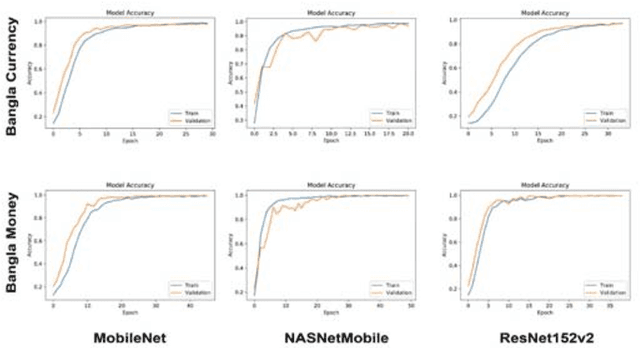Md. Mahir Labib
Deep Learning Approach Combining Lightweight CNN Architecture with Transfer Learning: An Automatic Approach for the Detection and Recognition of Bangladeshi Banknotes
Dec 10, 2020



Abstract:Automatic detection and recognition of banknotes can be a very useful technology for people with visual difficulties and also for the banks itself by providing efficient management for handling different paper currencies. Lightweight models can easily be integrated into any handy IoT based gadgets/devices. This article presents our experiments on several state-of-the-art deep learning methods based on Lightweight Convolutional Neural Network architectures combining with transfer learning. ResNet152v2, MobileNet, and NASNetMobile were used as the base models with two different datasets containing Bangladeshi banknote images. The Bangla Currency dataset has 8000 Bangladeshi banknote images where the Bangla Money dataset consists of 1970 images. The performances of the models were measured using both the datasets and the combination of the two datasets. In order to achieve maximum efficiency, we used various augmentations, hyperparameter tuning, and optimizations techniques. We have achieved maximum test accuracy of 98.88\% on 8000 images dataset using MobileNet, 100\% on the 1970 images dataset using NASNetMobile, and 97.77\% on the combined dataset (9970 images) using MobileNet.
* 4 pages
Restyling Images with the Bangladeshi Paintings Using Neural Style Transfer: A Comprehensive Experiment, Evaluation, and Human Perspective
Dec 10, 2020



Abstract:In today's world, Neural Style Transfer (NST) has become a trendsetting term. NST combines two pictures, a content picture and a reference image in style (such as the work of a renowned painter) in a way that makes the output image look like an image of the material, but rendered with the form of a reference picture. However, there is no study using the artwork or painting of Bangladeshi painters. Bangladeshi painting has a long history of more than two thousand years and is still being practiced by Bangladeshi painters. This study generates NST stylized image on Bangladeshi paintings and analyzes the human point of view regarding the aesthetic preference of NST on Bangladeshi paintings. To assure our study's acceptance, we performed qualitative human evaluations on generated stylized images by 60 individual humans of different age and gender groups. We have explained how NST works for Bangladeshi paintings and assess NST algorithms, both qualitatively \& quantitatively. Our study acts as a pre-requisite for the impact of NST stylized image using Bangladeshi paintings on mobile UI/GUI and material translation from the human perspective. We hope that this study will encourage new collaborations to create more NST related studies and expand the use of Bangladeshi artworks.
* 6 pages
 Add to Chrome
Add to Chrome Add to Firefox
Add to Firefox Add to Edge
Add to Edge